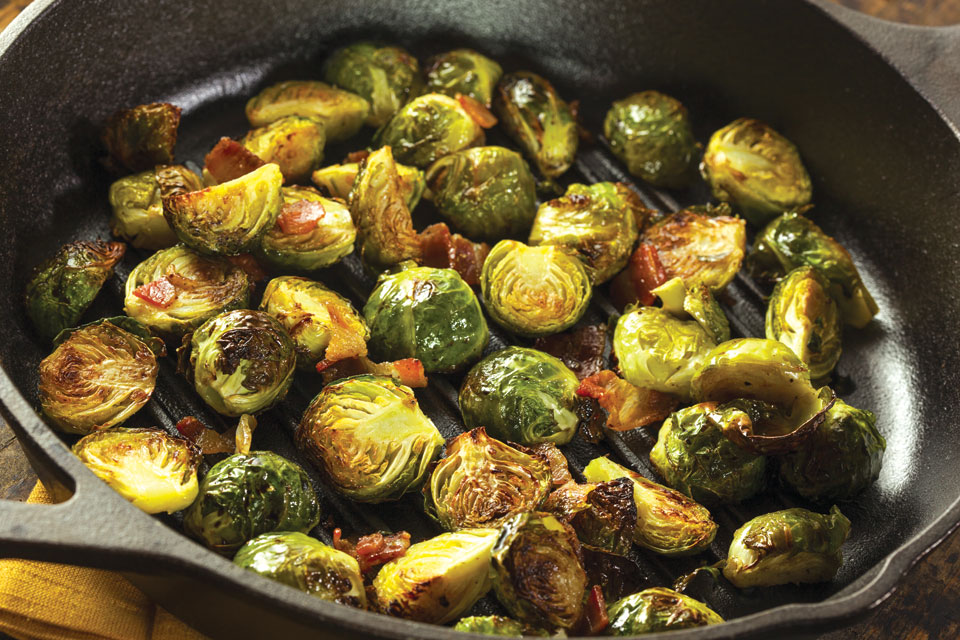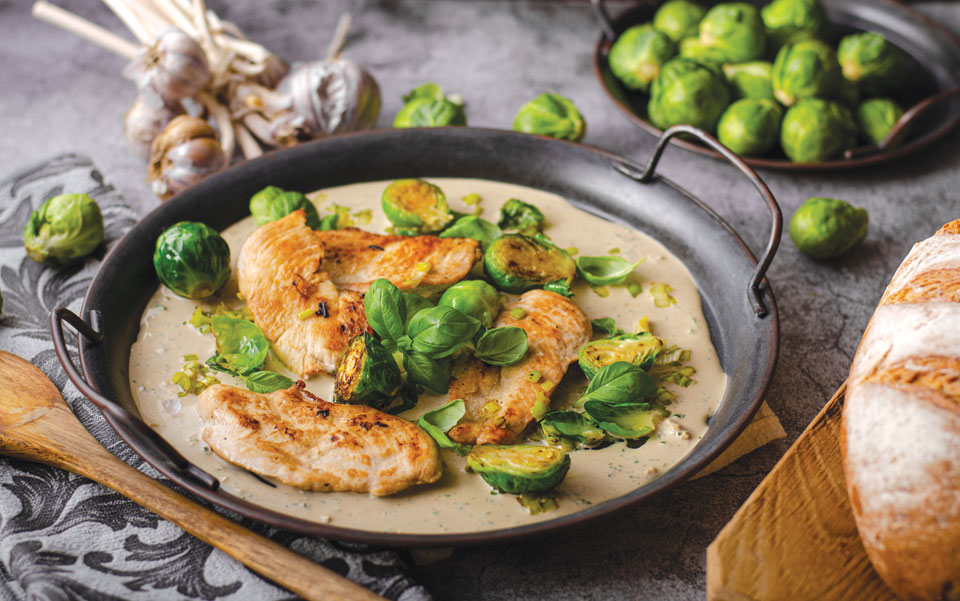
Why? As a kid I use to think they were the worst tasting food on the planet. I also hated the smell of this terrible vegetable. I won’t tell you how I referred to them when my mother made them; it was childish and gross. So why are Brussels sprouts so popular today? People must be ordering them to be featured in so many restaurants, so maybe I need to try them. Will the offensive Brussels sprouts taste better than when I was a kid?
It’s a fact of growing older that Brussels sprouts don’t taste quite as gross as you remember. While maturing tastebuds may have something to do with this change of heart, it’s also apparent that the taste of Brussels sprouts has genuinely changed. The change happened over years with various farmers and seed companies perfecting the taste and eliminating some of the gross ingredients that people detested.
Your tastebuds don’t deceive you: Brussels sprouts actually taste better than they use to. So, if you think Brussels sprouts have improved in recent decades, it’s not your imagination. However, if you remain a die-hard sprouts detester, then there’s a good chance you can blame the DNA passed down from your mom and dad.
The Benefits of Brussels Sprouts
Brussels sprouts are high in fiber, vitamins, minerals, and antioxidants, making them a nutritious addition to your diet. They may also come with added health benefits, including decreased inflammation and improved immune system health.
The Evolution Of The Taste Of Brussels Sprouts
Brussels sprouts are a human creation and are the product of centuries of selective breeding.
Ancestors of the sprout are thought to have originated in ancient Rome, but they likely took on the form we recognize today in Belgium (hence the name Brussels sprouts). However, the cultivation of Brussels sprouts underwent a major revolution years ago which farmers believe was the start of their bad reputation. The Sakata seed company developed the first plants that would mature evenly, and they were beautiful and green with lots of production, but they were horribly bitter, and they turned off an entire generation. In the face of mechanized agriculture, Brussels sprouts picked up that unpleasant tang that so many grew to detest. They became the butt of all types of jokes around the dinner table.
By the 1990s, the Big Sprout industrial complex had had enough and started to look into ways to make Brussels sprouts great again. A study by scientists from the seed and chemical company Novartis managed to pinpoint the specific compounds that gave Brussels sprouts their undesired bitterness: two glucosinolates called sinigrin and progoitrin. This helped to prompt a number of seed companies to sift through gene banks to look for old varieties of vegetables that happened to have low levels of the bitter chemicals, according to NPR. These less bitter varieties were then cross-pollinated with modern high-yielding ones, aiming to get the best of both worlds: a better-tasting product that could be cultivated on an industrial scale. These methods changed this vegetable from a culinary pariah to a prized side dish and appetizer.
After writing this article I decided I needed to taste Brussels sprouts again for myself. So, I have made this the subject of my article, “New Discoveries,” in this issue.

The Third Time‘s A Charm

In my opinion, the key to loving Brussels sprouts is preparing them the right way. In the past, when my mother served them to me I really hated them because she boiled or steamed the sprouts and they tasted bitter, had a strong odor I disliked, and had an unappealing mushy texture.
This past December I went on a mission to taste the Brussels sprouts that kept appearing on so many restaurant menus. Most feature them as an appetizer and, to me, that also means appetizing. I couldn’t imagine that my opinion would change since I can honestly say I loathed my mother’s version and my memory of this awful and smelly vegetable. Sorry Mom!
At the first restaurant, I thought well I will taste one and just throw the rest away. Wasteful but I felt I needed to try these popular appetizers. Much to my surprise, they were crispy, very dark in appearance, which is part of the recommended cooking method, and were much better than my memory recalled. So, I sampled them without the thought of holding my nose and throwing them away. They were good, but not really great.
I continued to explore this as I was still in shock that Brussels sprouts kept appearing on so many menus. Then I asked friends if they liked them and, again, I was surprised to learn that many of them did and those that didn’t had my same perspective of the taste and smell of the sprouts.
On my second sampling at a different rest-aurant, I actually liked them better and ate more of them. So, this was progress or maybe less fear of what they were going to taste like. I made one more tasting when I was told by my daughter that she really loved them at a popular restaurant and, while they were not on the menu, they were often featured as a special. Special to me is yummy food like stone crabs, artichokes, salmon, and not on the list was Brussels sprouts. I ordered them on special and they were better than my first two samplings, or maybe I was over the memory of those awful things my mother would make me eat.
The bottom line is I liked them, and I will join in with friends or family if they are ordered at dinner. I might not be the biggest fan, but I am no longer a hater of this vegetable. I am proud of myself for being open-minded and pleased that I have outgrown my dislike of Brussels sprouts.
Maybe liver is next!


How to Cook Brussels Sprouts
Making perfect, crispy baked Brussels sprouts is easy.
First, trim and chop the Brussels sprouts. Chop off and discard any dry or woody stems at the bottom of the sprouts. Then, slice larger sprouts in half, leaving smaller ones whole. It is best to try to make all your veggies a similar size so that they cook evenly.
Next, season the sprouts. Toss them with olive oil and generous pinches of salt and pepper. Transfer them to a parchment-lined baking sheet and arrange them in an even layer with their cut sides facing down. This way, you’ll get nice browning on the cut sides of the sprouts, and their exposed leaves will become deliciously crisp as they bake.
Transfer the sheet pan to a 425-degree oven and bake for 20 to 30 minutes, until the Brussels sprouts are tender and golden brown around the edges.
Some Recipes Call For Different Seasonings
1. Add Lemon, Thyme and Parmesan seasoning
2. Add Garlic, Salt, and Pepper and balsamic vinegar
3. Add Honey, Salt and Pepper
4. Add Parmesan Cheese, Herbs and Red Pepper Flakes
5. Add McCormick Oven Roasted Brussels Sprouts Seasoning Mix
Gordon Ramsay Recipe For Roasted Brussels Sprouts with Garlic, Lemon and Feta


INGREDIENTS
2 cups of fresh Brussels sprouts, halved
2 tbsp olive oil (divided)
Sea salt and freshly cracked pepper, to taste
Juice of 1 lemon (divided)
2 cloves of garlic, minced
Dash of crushed red pepper flakes
Zest of 1 lemon
Feta cheese, to taste
Directions:
Preheat the oven to 400 degrees. Line a baking sheet with tin foil then coat with cooking spray.
Zest the lemon; set aside. Toss the Brussels sprouts with 2-3 teaspoons of olive oil, then season well with sea salt and freshly cracked pepper, to taste. Toss to coat evenly, then place on the baking sheet. Squeeze one-half of a lemon evenly over the sprouts. Place into the oven and bake for 10 minutes, then flip the Brussels sprouts and roast for an additional 10 minutes. Remove from the oven and set aside.
Heat a large skillet over medium heat with 2-3 teaspoons of olive oil. Add the minced garlic and dash of crushed red pepper flakes then cook, stirring constantly, for 1 minute. Add the Brussels sprouts followed by the juice from the remaining half of the lemon. Toss to coat evenly. Pour into serving bowl. Sprinkle the top of the Brussels sprouts with feta cheese and lemon zest.
